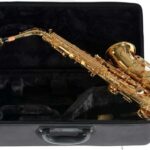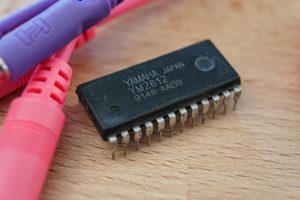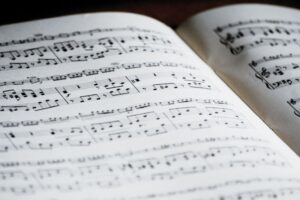It started as a humble speaker, but later on, it became an important sound component in some of the world’s top recording studios. In this Yamaha NS-10 review, I’ll list all of its features and specs so you can see if it is the right speaker for you.
The Yamaha NS-10 is a small loudspeaker that Yamaha Corporation introduced in 1978. It started as a tiny bookshelf speaker intended for the domestic environment. Because of its unique characteristics, this speaker, later on, became popular among pop and rock recording engineers in the music industry.
Recording engineers used the Yamaha NS-10 as a nearfield studio monitor with its unique ability to reproduce sounds. It can produce pure sound and has an outstanding flat rate response time required for sound mixing. The sound coming out from this speaker is clean.
Read on to learn more about the Yamaha NS-10 loudspeaker, its features and specs, and other things you need to know about it to see if it’s the speaker you are looking for.
About the Yamaha NS-10
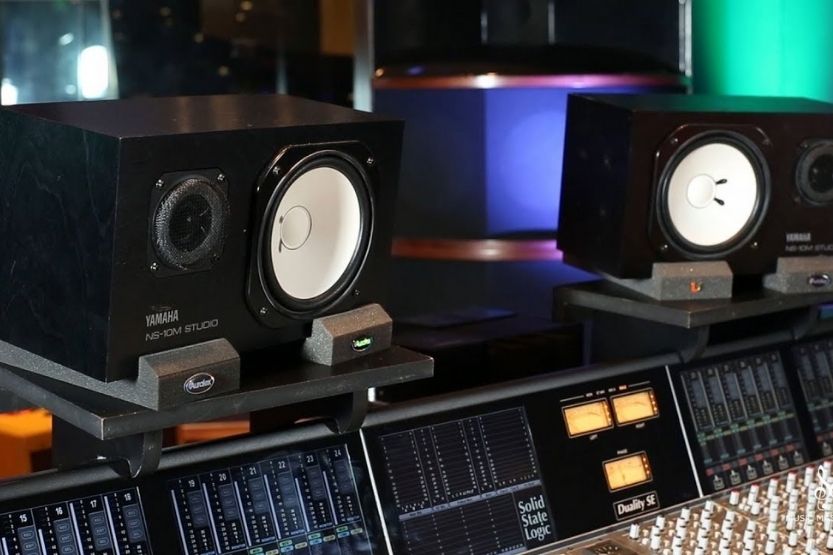
Akira Nakamura Designed the Yamaha NS-10
The designer of the Yamaha NS-10 is Akira Nakamura, and Yamaha Corp. launched it in 1978. It was intended for the home market since it was just a small bookshelf speaker. The Yamaha NS-10 has a flat response and produces pure, unadulterated, and clean sound. But it was not well received by its intended market.
Yamaha NS-10 Variants
Yamaha produced several variants of the Yamaha NS-10 before discovering that not many people were using it to listen to records. The company then launched the NS-10M Pro, and the NS-10M targeted the recording studios.
Yamaha NS-10 Awards
However, it was able to win a Technical Grammy in 2007 for its design. A year after that, Mix magazine inducted the Yamaha NS-10 into its Technology Hall of Fame. This tiny speaker became a standard sound device used by recording engineers in rock and pop music. They used it as a nearfield monitor in their recording studios.
This speaker is good for sound mixing because it produces pure sound combined with a remarkable flat response. Placed alongside other speakers, the Yamaha NS-10 will produce the cleanest sounds.
Yamaha Discontinued Yamaha NS-10 in 2001
Unfortunately, Yamaha Corp. discontinued the Yamaha NS-10 in 2001 partly because of its woofer cone’s insufficient supply of raw materials. They were using the banana pulp to make the cones.
Additionally, their tweeters failed not because of their design and size but because they were subjected to recording studios’ continuous high sound pressure levels (SPLs). That made them not very reliable.
The Yamaha NS-10 became the preferred nearfield monitor in the 1980s because it could reveal recording mistakes or weaknesses. It displaced the Auratone 5C Sound Cube, which was the choice studio nearfield speaker at that time.
Nearfield monitors are used for close distance listening so that the majority of direct sounds go right to the ear of the listener instead of being reflected off ceilings and walls. As such, they are small enough to be put on a desk or a stand close to the person listening.
Engineers Were Impressed of Yamaha NS-10’s Sound
The story of how it reached the shores of the United States goes like this: Apparently, an American recording engineer discovered the Yamaha NS-10 when they visited Japan. They used it to monitor a recording in a studio in Japan and brought one pair back to a Los Angeles studio in the US.
Other engineers heard the tiny speakers and were impressed by the sounds they produced. Word spread to New York, where recording studios like The Power Station and others adopted it as their nearfield monitors.
Soon, the Yamaha NS-10 became popular among the recording engineers of leading recording studies on both sides of the Atlantic. There came a time when freelance recording producers and engineers carried along with them a pair of these speakers from studio to studio together with their usual recording paraphernalia such as mikes, mixers, and so forth.
Recording Studios Adopted It as Standard Speaker
Soon enough, the Yamaha NS-10 was adopted as the standard by many recording studios worldwide, especially those recording pop and rock music. In its heyday, the Yamaha NS-10 sold more than 200,000 pairs around the world. Gizmodo called it “the most important loudspeaker you never heard of.”
Even when Yamaha Corp. discontinued its production, the Yamaha NS-10 can still be found in many recording studios everywhere. According to Mix magazine, in one of its articles published in 2008, some Yamaha NS-10 variants were still being sold commercially in Japan.
Key Features of the Yamaha NS-10
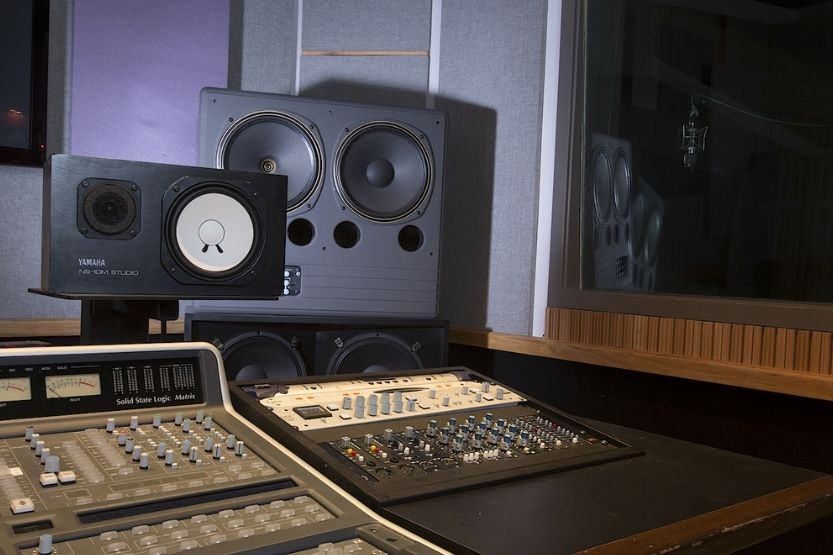
This small speaker will not impress recording engineers if it does not have the features they are looking for. Among its many qualities, here are the key features that have probably influenced these engineers:
1. Design Elements
In terms of its overall design, the Yamaha NS-10M is technically ordinary. But these tiny speakers have design elements that enable them to offer the clinical and analytic sound that audio professionals are looking for.
This small speaker has a fast response to sound in the low frequencies, as indicated by a certain Newell and company test at Southampton University. They found that the speaker’s capacity to start and stop in response to a signal was better than many nearfield monitors in its range and class.
In the low-frequency spectrum, this speaker has a fast decay time. This resulted in a balanced and clear sound of the bass in the sound mix. The design elements that helped in this regard were the hard white cones and the closed boxed design. They remained still, and so they produce more accurate and sharper transient sounds.
2. Signature Sound
In basic terms, this bookshelf speaker has sonic qualities that enable record producers to determine the sound quality of their recordings. So, if a recording sounds good on the Yamaha NS-10, then it should also sound good on other playback devices.
On a practical level, music professionals use the Yamaha NS-10 for their clinical-sounding and analytical properties. Gizmo stated that it is like a music editor that can reveal recording weaknesses. In that way, record engineers will know if they have to redo their recordings or make the required compensation in the mix.
The fast decay time of this speaker in the low frequencies, as researchers have found, also guarantees that low-frequency sounds of the bass, drums, and guitars are balanced correctly in the mix.
3. Construction
The speaker inside a Yamaha NS-10 is an 8-ohm, two-way speaker. Its box is a sealed 10.4-liter cabinet that measures 15 x 8.5 x 7.8 inches. The whole speaker assembly weighs about 13.2 pounds.
The material used for the box is a particle board with a thickness of about 0.98 inches. It is covered with wood veneer painted with seven finishing layers of black color. The home version is vertically oriented and comes with a grille.
There are two drivers (speakers) inside the sealed box. One is the 180 mm. paper woofer, and the other is a 35 mm. domed tweeter. The crossover network is second-order passive. It crosses over 2 kHz.
The frequency range of the Yamaha NS-10M is from 60 Hz to 20 kHz. Its power handling rate is from 25 to 50 watts. The earlier versions of this speaker have terminals that are pressed down. Its later versions come with screwed terminals.
4. Sound Reception
This speaker became a viral phenomenon, with many top freelance sound engineers and record producers using it in their gigs. Many recording studios used this speaker in their facilities to attract top recording producers. That made this speaker the standard of the industry.
Though many of these recording engineers didn’t particularly like to listen to it, they have grown dependent on it as an effective recording tool. But they don’t quite agree with its sound quality. Some love it while others hate it. But they all agree that it is a very effective professional device for them.
Standard Features of the Yamaha NS-10
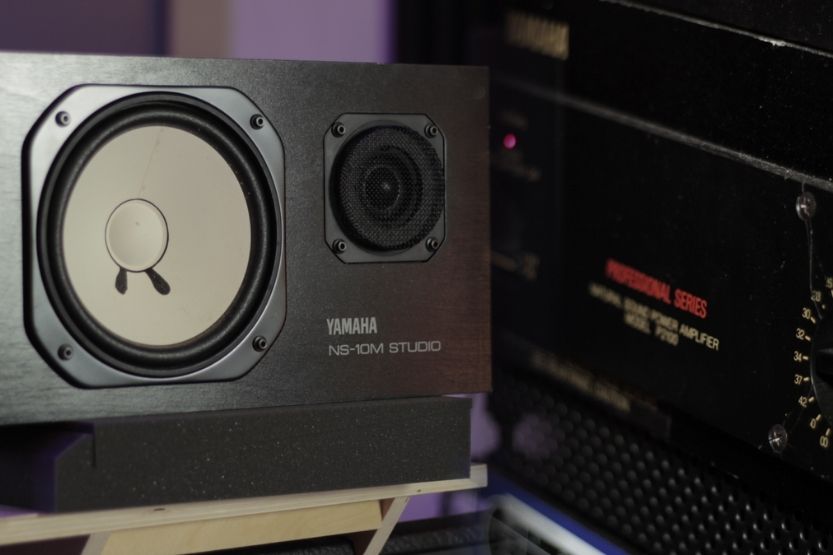
Every Yamaha NS-10, regardless of the version, has the following standard features:
- Optimum tweeter and woofer matching
- Overall construction is solid and rugged
- Can handle the stress of continuous use
- Smooth transition between frequency ranges
- Compact and high performing configuration
- Careful design of crossover
- Minimum phase variation
- Solid horizontal design placement
Technical Specs of the Yamaha NS-10
When choosing a speaker, you need to have an overview of its technical specifications. It shows you what the speaker can handle and the sound quality that it can produce. The key specs of the Yamaha NS-10 are the following:
- Speaker type – Bookshelf
- Dimension – 15 x 8.5 x 7.8 inches (width x height x depth)
- Enclosure – Real wood, black finish
- Weight – 14 pounds
- Power handling – 120 watts (maximum); 60 watts (program)
- Frequency Range – 60 Hz to 20 kHz
- Sensitivity 1 w/1 m – 90 db. SPL
- Normal Impedance – 8 ohms
- Driver Components – 18 cm. cone (LF JA1801; 3.5 cm. soft dome tweeter (HF JA0518A)
Full Specs of the Yamaha NS-10 Variants
The Yamaha Corporation produced 6 versions of the Yamaha NS-10 from 1987 to 1995. There are some differences in their specifications. The table below will show the specifications of each variant of the NS-10:
| Particulars | Model NS-10M | NS-10M Pro | NS-10M Studio | NS-10MC | NS-10MX | NS-10MT |
| Year | 1978 | 1987 | 1987 | 1987 | 1993 | 1995 |
| Nominal power input | 25 watts | 65 watts | 65 watts | 65 watts | 65 watts | 65 watts |
| Maximum power input | 50 watts | 120 watts | 120 watts | 120 watts | 120 watts | 180 watts |
| Woofer | 18cm. JA1801 | 18cm. JA1801 | 18cm. JA1801 | 18cm. JA1801 | 18cm. cone JA1801 | 18cm. cone JA1801 |
| Nominal impedance (Ohm) | 8 | 9 | 8 | 8 | 8 | 6 |
| Tweeter | JA0518 3.5 cm; soft dome | JA0518 3.5 cm; soft dome | HF: JA0518A 3.5cm; 1-3/8″ soft dome | HF: JA0518A 3.5cm; 1-3/8″ soft dome | 3.5cm; dome | 3.5cm; dome |
| Frequency response | 85Hz maximum | Ranges between 60Hz – 20Khz | Ranges between 60Hz – 20Khz | Ranges between 60Hz – 20Khz | Ranges between 60Hz – 20Khz | Ranges between 43Hz – 30Khz |
| Crossover frequency | 2Khz | 2Khz | 2Khz | 2Khz | 2Khz | 2Khz |
| SPL (sensitivity) | 90 dB/m-W | 90 dB/m-W | 90dB (1W, 1m on axis) | 90dB (1W, 1m on axis) | 90 dB/m-W | 90 dB/m-W |
| Dimension | 15″ x 8-1/2″ x 7-4/5″ | 8-7/16″ x 15-1/16″ x 7-13/16″ | 15″ x 8-1/2″ x 7-7/8″ | 15″ x 8.5″ x 7.9″ | 8-7/16″ x 15-1/16″ x 7-13/16″ | 8-7/16″ x 15″ x 10″ |
| Enclosure (L) | 10.4 | 10.4 | 10.4 | 10.4 | 10.4 | 10.4 |
| Weight | 13lbs 4oz | 13lbs 4oz | 13lbs 4oz | 14lbs 5oz | 15lbs 6oz | 20lbs |
| Placement | Vertical | Vertical | Horizontal | Horizontal | Vertical | Vertical |
| Current price | $400-550 | $500-800 | $500-800 | $500-800 | $700-900 | $600-700 |
Conclusion: Yamaha NS-10
Yamaha Corporation launched the Yamaha NS-10 in 1978, targeting the home environment. It is just a small bookshelf speaker. However, its sound quality caught the attention of pop and rock recording engineers.
The sound reproduction of this speaker is clean. It has a remarkable flat rate response that is required for good sound mixing. So, these sound engineers used it as a nearfield speaker in their recording studios. That paved the way for its popularity. If you love clean and pure sounds, this is your speaker.

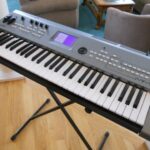
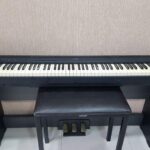
![Yamaha Grand Pianos [Specs and Review] Yamaha Grand Pianos](https://musicalinstrumentpro.com/wp-content/uploads/2021/08/Yamaha-grand-pianos-150x150.jpg)
![Yamaha Hybrid Pianos [Specs and Review] Yamaha Hybrid Pianos](https://musicalinstrumentpro.com/wp-content/uploads/2021/08/Yamaha-Hybrid-Pianos-150x150.jpg)
![Yamaha Upright Pianos [Specs and Review] Yamaha Upright Pianos](https://musicalinstrumentpro.com/wp-content/uploads/2021/08/Yamaha-Upright-Pianos--150x150.jpg)
